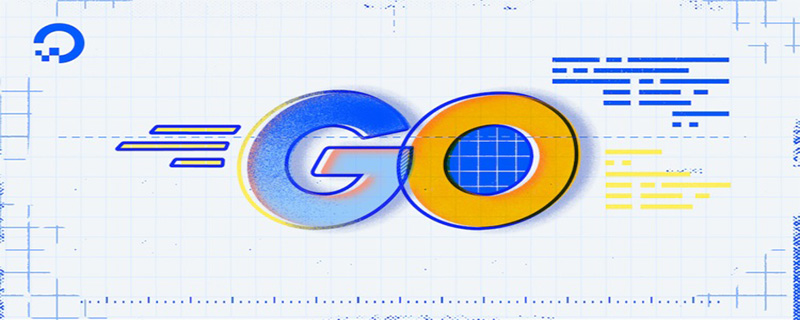聊聊Go语言中new和make关键字有什么区别
- PHPz转载
- 2023-03-27 16:16:17984浏览
本篇文章来介绍一道非常常见的面试题,到底有多常见呢?可能很多面试的开场白就是由此开始的。那就是 new 和 make 这两个内置函数的区别。

其实这个问题本身并不复杂,简单来说就是,new 只分配内存,而 make 只能用于 slice、map 和 chan 的初始化,下面我们就来详细介绍一下。
new
new 是一个内置函数,它会分配一段内存,并返回指向该内存的指针。
其函数签名如下:
源码
// The new built-in function allocates memory. The first argument is a type, // not a value, and the value returned is a pointer to a newly // allocated zero value of that type. func new(Type) *Type
从上面的代码可以看出,new 函数只接受一个参数,这个参数是一个类型,并且返回一个指向该类型内存地址的指针。
同时 new 函数会把分配的内存置为零,也就是类型的零值。
使用
使用 new 函数为变量分配内存空间:
p1 := new(int)
fmt.Printf("p1 --> %#v \n ", p1) //(*int)(0xc42000e250)
fmt.Printf("p1 point to --> %#v \n ", *p1) //0
var p2 *int
i := 0
p2 = &i
fmt.Printf("p2 --> %#v \n ", p2) //(*int)(0xc42000e278)
fmt.Printf("p2 point to --> %#v \n ", *p2) //0上面的代码是等价的,new(int) 将分配的空间初始化为 int 的零值,也就是 0,并返回 int 的指针,这和直接声明指针并初始化的效果是相同的。
当然,new 函数不仅能够为系统默认的数据类型分配空间,自定义类型也可以使用 new 函数来分配空间,如下所示:
type Student struct {
name string
age int
}
var s *Student
s = new(Student) //分配空间
s.name = "zhangsan"
fmt.Println(s)这就是 new 函数,它返回的永远是类型的指针,指针指向分配类型的内存地址。需要注意的是,new 函数只会分配内存空间,但并不会初始化该内存空间。
make
make 也是用于内存分配的,但是和 new 不同,它只用于 slice、map 和 chan 的内存创建,而且它返回的类型就是这三个类型本身,而不是他们的指针类型。因为这三种类型本身就是引用类型,所以就没有必要返回他们的指针了。
其函数签名如下:
源码
// The make built-in function allocates and initializes an object of type // slice, map, or chan (only). Like new, the first argument is a type, not a // value. Unlike new, make's return type is the same as the type of its // argument, not a pointer to it. The specification of the result depends on // the type: // Slice: The size specifies the length. The capacity of the slice is // equal to its length. A second integer argument may be provided to // specify a different capacity; it must be no smaller than the // length, so make([]int, 0, 10) allocates a slice of length 0 and // capacity 10. // Map: An empty map is allocated with enough space to hold the // specified number of elements. The size may be omitted, in which case // a small starting size is allocated. // Channel: The channel's buffer is initialized with the specified // buffer capacity. If zero, or the size is omitted, the channel is // unbuffered. func make(t Type, size ...IntegerType) Type
通过上面的代码可以看出 make 函数的 t 参数必须是 slice、map 和 chan 中的一个,并且返回值也是类型本身。
使用
下面用 slice 来举一个例子:
var s1 []int
if s1 == nil {
fmt.Printf("s1 is nil --> %#v \n ", s1) // []int(nil)
}
s2 := make([]int, 3)
if s2 == nil {
fmt.Printf("s2 is nil --> %#v \n ", s2)
} else {
fmt.Printf("s2 is not nill --> %#v \n ", s2)// []int{0, 0, 0}
}slice 的零值是 nil,但使用 make 初始化之后,slice 内容被类型 int 的零值填充,如:[]int{0, 0, 0}。
map 和 chan 也是类似的,就不多说了。
总结
通过以上分析,总结一下 new 和 make 主要区别如下:
make 只能用来分配及初始化类型为 slice、map 和 chan 的数据。new 可以分配任意类型的数据;
new 分配返回的是指针,即类型
*Type。make 返回类型本身,即Type;new 分配的空间被清零。make 分配空间后,会进行初始化;
推荐学习:《go视频教程》
以上是聊聊Go语言中new和make关键字有什么区别的详细内容。更多信息请关注PHP中文网其他相关文章!

